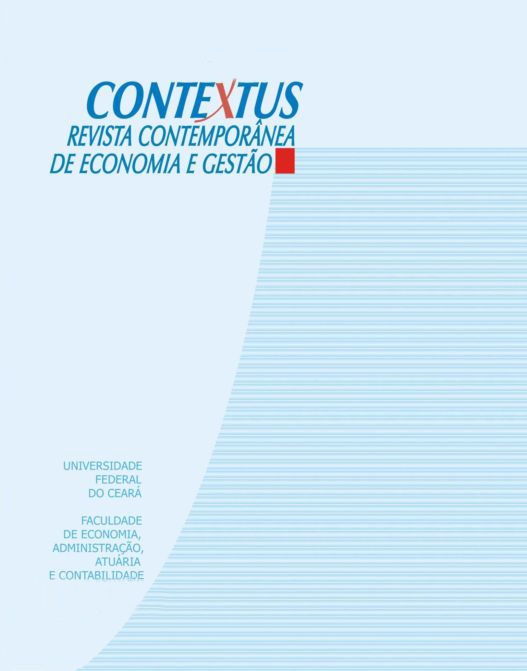A NEW SOLVENCY PREDICTION MODEL FOR COMPANIES IN THE REAL ESTATE SECTOR
DOI:
https://doi.org/10.19094/contextus.v14i2.823Keywords:
Real Estate Sector, Insolvency risk, Monte Carlo Simulation.Abstract
This study aims to propose a model that estimates insolvency risk for real estate companies through an approach that considers, in addition to the assets' quality, the mismatches between assets and liabilities on time, as well as different risks within the sector. Through Monte Carlo simulations and hypothetical examples, we show that the proposed model was able to capture mismatches between assets and liabilities and the effects of changes in the risks of credit, liquidity and engineering. In addition, our results suggest that the absence of a harmonious distribution of assets and liabilities leads to increasing insolvency risks even when the present value of total assets is greater than the present value of total liabilities.
Downloads
References
ALTMAN, E.I. Financial ratios, discriminant analysis and prediction of corporate bankruptcy. Journal of Finance, v. 23, n. 4, p. 189-209, 1968.
ALVES, P.R.R. O desenvolvimento do sistema financeiro imobiliário e da securitização de recebíveis imobiliários na redução do déficit habitacional brasileiro. 2005. 86 f Dissertação (Mestrado) - Universidade Federal do Rio de Janeiro, Brasil, 2005.
BANCO NACIONAL DE DESENVOLVIMENTO. Perspectivas do investimento 2010-2013 na Construção Civil. Disponível em: <http://www.bndes.gov.br>. Acesso em: 12 fev. 2010.
BOLSA DE VALORES DO ESTADO DE SÃO PAULO. Dados de mercado. Disponível em: <http://bmfbovespa.comunique-se.com.br/>. Acesso em: 12 fev. 2010.
BRITO, G.A.S.; ASSAF NETO, A. Modelo de Classificação de Risco de Crédito das Empresas. Revista Contabilidade e Finanças, v. 19, n. 46, p. 18-29, 2008.
CÂMARA BRASILEIRA DA INDÚSTRIA DA CONSTRUÇÃO. Participação da Construção Civil no PIB Brasil. Disponível em: <http://www.cbicdados.com.br/menu/home/participacao-da-construcao-civil-no-pib-brasil>. Acesso em: 12 fev. 2010.
CORREIA, C.S.V. Previsão da insolvência: Evidência no setor da construção. 2012. 72 f. Dissertação (Mestrado) - Universidade de Aveiro, Portugal, 2012.
DÉCAMPS, J.; ROCHET, J.; ROGER, B. The three pillars of Basel II: Optimizing the mix, Journal of Financial Intermediation v. 13, p. 132-155, 2004.
EXAME.COM. Cenário interno leva ações de construtoras a perderem valor. Disponível em: <http://exame.abril.com.br/mercados/noticias/cenario-interno-leva-acoes-de-construtoras-a-perdem-valor>. Acesso em: 12 fev. 2010.
HANNAN, T.H.; HANWECK, G.A. Bank Insolvency Risk and the Market for Large Certificates of Deposit. Journal of Money, Credit and Banking, v.20, n. 2, p. 203-211, 1988.
HORTA, R.A.M.; BORGES, C.C.H.; CARVALHO, F.A.A.; ALVES, F.J. dos S. Previsão de Insolvência: Uma Estratégia para Balanceamento da Base de Dados Utilizando Variáveis Contábeis de Empresas Brasileiras. Sociedade, Contabilidade e Gestão, Rio de Janeiro, v. 6, n. 2, p. 21-36, 2011.
HSIAO, S.H.; WHANG, T.J. A study of financial insolvency prediction model for life insurers. Expert Systems with Applications. v.36, p. 6100-6107, 2009.
JUNIOR, A.F.A.; NOGUEIRA, D.G.; SHIKIDA, C.D. Analysis of the efficiency of national civil construction firms. Brazilian Business Review, v. 9, n. 3, p. 45-70, 2012.
KANITZ, S. C. Indicadores contábeis e financeiros de previsão de insolvência: a experiência na pequena e média empresa brasileira. São Paulo: 1976. Tese (Livre Docência) – Faculdade de Economia, Administração e Contabilidade, Universidade de São Paulo.
KIM, YONG. Modeling of commercial real estate credit risks. Quantitative Finance. v. 13 n. 12, p. 1977-1989, 2013.
LANGFORD, D.; IYAGBA, R.; KOMBA, D. M. Prediction of solvency in construction companies. Construction Management and Economics, v. 11, n. 5, p. 317-325, 1993.
MASON, R.J.; HARRIS, F.C. Predicting company failure in the construction industry. Proceedings Institution of Civil Engineers, v. 66, n. 2, p. 301-317, 1979.
MERTON, R. C. Theory of Rational Option Pricing. Bell Journal of Economics and Management Science, v. 4, 141-183, 1973.
MONTE-MOR, D.S.; SANFINS, M. A. dos S. RiD: Uma Nova Abordagem para o Cálculo do Risco de Insolvência. Revista Brasileira de Finanças, v. 12, n. 2, p. 229-255, 2014.
SALCEDO-SANZ, S.; FERNANDEZ-VILLACANAS, J.; BOUSONO-CALZON, C., & SERGOVIA-VARGAS, M. Genetic Programming for the Prediction of Insolvency in Non-Life Insurance Companies. Computers & Operations Research, v. 32, p. 749-765, 2005.
SERASA EXPERIAN. Indicador Serasa Experian de Falências e Recuperações. Disponível em: <http://noticias.serasaexperian.com.br/indicadores-economicos/falencias-e-recuperacoes/>. Acesso em: 12 fev. 2015.
THOMSON, J. B. Predicting Bank Failures in the 1989s. Economic Review, v. 27, p. 9-20. Federal Reserve Bank of Cleveland, 1991.
Downloads
Additional Files
Published
How to Cite
Issue
Section
License
The authors, while doing the submission, accept the notice below:
We authors hold the copyright related to our paper and transfer Contextus journal the right for the first publication with a Creative Commons’ international license of the modality Attribution – Non-commercial 4.0, which in turn allows the paper to be shared providing that both the authorship and the journal’s right for initial release are acknowledged.
Furthermore, we are aware of our permission to take part in additional contracts independently for non-exclusive distribution of the version of our work published in this journal (e.g. publishing it in an institutional repository or as a book chapter), while acknowledging both the authorship and the journal’s initial publication.
We also certify that the paper is original and up to this date has not been released in any other journal, Brazilian or of another nationality, either in Portuguese or another language, as well as it has not been sent for simultaneous publication in other journals.
Last, we not only know that plagiarism is not tolerated by Contextus but also certify the paper presents the sources of passages from cited works, including those authored by ourselves.


